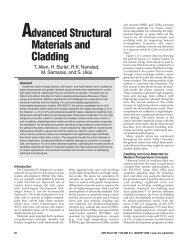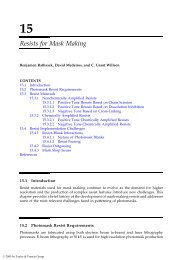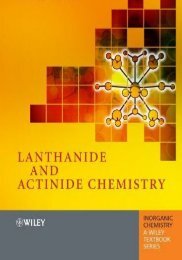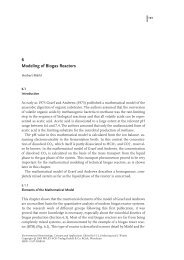SPECIAL SECTIONS: Filter Media Valves Advertising closes October 3
SPECIAL SECTIONS: Filter Media Valves Advertising closes October 3
SPECIAL SECTIONS: Filter Media Valves Advertising closes October 3
You also want an ePaper? Increase the reach of your titles
YUMPU automatically turns print PDFs into web optimized ePapers that Google loves.
12 SEPTEMBER 2008 | PBEI<br />
Palletizing. How easy are the bags to load on a pallet and<br />
how stable are they once palletized?<br />
Discharge. Discharging the contents of the bags quickly,<br />
easily, cleanly, and safely corresponds to bag type, but it also<br />
depends on the discharge methods your customers use.<br />
Printing. The bag must give you enough room to print<br />
all the necessary information on it.<br />
Reuse. Sometimes bags are returned for reuse and sometimes<br />
they can be recycled. Woven PP bags are best-suited for<br />
reuse.<br />
Batch inclusive capability. With the correct packaging<br />
materials, the bag and its contents can enter a process cham-<br />
Figure 2<br />
A net-weight form-fill-seal bagging machine.<br />
ber, such as a reaction vessel, together. This eliminates packaging<br />
waste and reduces costs.<br />
FIBCs. In some applications, such as packaging engineering<br />
plastics, the use of FIBCs is increasing. They are an attractive<br />
alternative to smaller bags because they<br />
Are easy to discharge using a vacuum pneumatic conveyor<br />
Use less packaging material than smaller bags to hold a<br />
given quantity of material<br />
Remain stable when stacked<br />
Fit snuggly in standard 6- and 12-meter-long containers<br />
Can be reused<br />
See Figure 1.<br />
IBCs. Rigid IBCs are a good alternative<br />
when the contents require<br />
strong protection or a highly stable,<br />
stackable package that only a rigid<br />
container can provide.<br />
Ready-made bags. PE and woven<br />
PP bags are simple packages and easy<br />
to transport manually. You can also<br />
use the weight of the bag’s contents<br />
(typically 25 kilograms) as the dosing<br />
unit and thus eliminate the need<br />
for batch weighing. Furthermore,<br />
bag-filling operations can be highly<br />
automated to maximize capacity.<br />
FFS bags. In the petrochemical<br />
industry, FFS bags, made from tubestock,<br />
continue to gain acceptance and<br />
may now dominate. Of all the 25-kilogram<br />
bags available, FFS bags—made<br />
from 120-micron-thick, side-gusseted<br />
material—are the most economical.<br />
Typically, they are co-extruded in two<br />
layers. Usually, 80 percent is low-density<br />
polyethylene (LDPE), and 20 percent<br />
is linear low-density polyethylene<br />
(LLDPE). Some FFS bags are made<br />
with 50 percent of each material. Coextruded<br />
bags withstand temperatures<br />
to 93°C, so they are well suited to handling<br />
petrochemicals that must be<br />
packaged while they are still warm, a<br />
development that is common due to<br />
changes in production methods.<br />
FFS technology<br />
When evaluating whether an<br />
FFS bagging system is right for your<br />
operation, consider<br />
Bagging rate (number of bags per<br />
hour)






